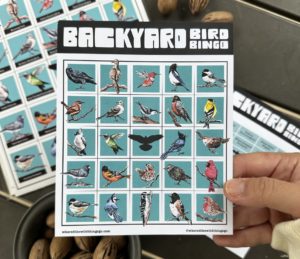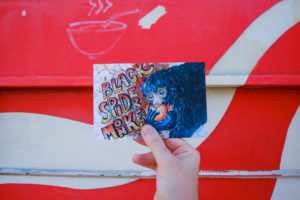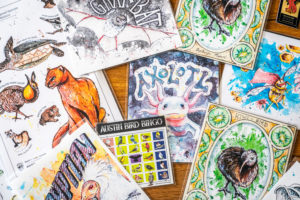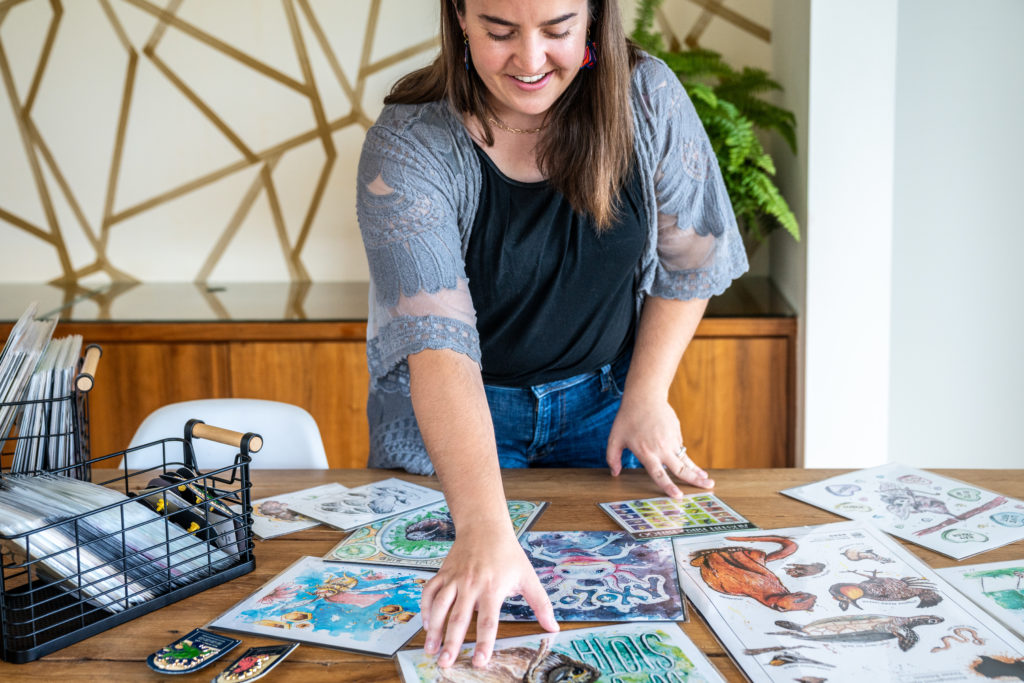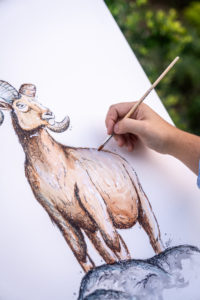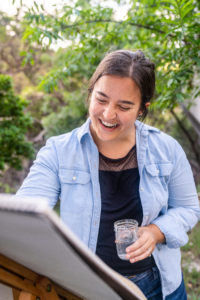 Emily Tolipova harnesses the power of art to raise awareness for wildlife.
Emily Tolipova harnesses the power of art to raise awareness for wildlife.
As an artist, Emily (Pulley) Tolipova’s favorite subject matter is birds, which is fitting given how certain events influenced her life like a feather floating in the wind. For each little twist and turn Tolipova saw an opportunity and used it as a springboard to success. Now she’s in a position to put her skills to use advocating for wildlife.
Originally, the plan was to be an art and psychology double major. After quickly determining that was not what she wanted to do, Tolipova dabbled in a variety of classes and – in her own words – “a whole slew of other majors” before one class sparked a passion.
“It wasn’t until I took my first visual communication course that I realized this is what I wanted to do, I just didn’t have a name for what it was before,” Tolipova said. “I was delighted how much you could use these skills and tools across a wide array of industries. I love that it’s so adaptable and flexible. Design and branding touch everything we interact with on a daily basis, whether we realize it or not.”
As a student, Tolipova had the opportunity to photograph illuminated manuscripts in the Special Collections Department at Pickler Memorial Library where she got to see life-size illustrations in Audubon books. During her semester studying abroad in Indonesia, she explored the world of graphic design through a different cultural lens. By the time she graduated in 2016, Tolipova not only had a bachelor’s degree in visual communication, she also had minors in art history and international studies.
“Truman was instrumental in me becoming the creator I am today,” she said. “I was always looking for different classes, both in and out of Truman, that could teach me new skill sets. I am excited to see how I can continue to incorporate the things I’ve learned even more moving forward.”
One look at her professional portfolio will show Tolipova is an artist who is difficult to pigeonhole – pun intended. She has collaborated with large brands and organizations, in addition to selling her own pieces online and in markets. Her work has been featured in galleries and in art vending machines. She’s also comfortable working in a plethora of media, from stained glass to modern embroidery and papercraft. Her favorite, however, remains watercolor.
“I honestly fell in love with painting wildlife in the first watercolor illustration class I took at Truman with Rusty Nelson,” she said, “He had us paint birds for one of the demos, and I was hooked. I have always enjoyed exploring the nature around me, and it’s so exciting to bring these amazing creatures to life with my paintbrush.”
Tolipova found more than inspiration in recreating wildlife, she discovered a cause to champion. Not long after graduating, she created “Where’d The Wild Things Go?,” a series of illustrative postcards featuring endangered species. Tolipova would then photograph her painted works at various locations in an effort to show how these animals were missing in society. Originally a passion project, it turned into a full-time business due to some unforeseen circumstances.
“It wasn’t until the pandemic in 2020 that I picked it up again and turned it into a business,” Tolipova said. “I suddenly had all this free time on my hands and used it to expand on the postcard series, develop new pieces such as cards and prints, and it really exploded from there.”
Her website, wheredthewildthingsgo.com, not only showcases Tolipova’s work, it’s also a platform to raise awareness for wildlife and organizations working to protect them. One of the featured projects is Austin Bird Bingo, a creation that highlights 24 unique species of birds in her current home of Austin, Texas. Described as “Pokémon GO, but real life” these color-coded cards feature scannable QR codes so participants can learn about each of the birds they spot.
“It’s hard to conserve something you’ve never seen, interacted with or might not even know about,” Tolipova said. “At people’s core, we all want to help, but we don’t always know what around us is in need of that help. By bringing my piece to life in the homes of those who scanned the code, they are now able to interact with species and to see them and these different ecosystems they may not have known about before.”
Bird Bingo may ultimately be one of many interactive art projects Tolipova creates. She has hopes for collaborations with zoos, botanical gardens, national parks and educational programming.
“I would love to see my work continue to grow both nationally and internationally,” she said. “I want to get people excited about being outside and interacting with the world around them.”

